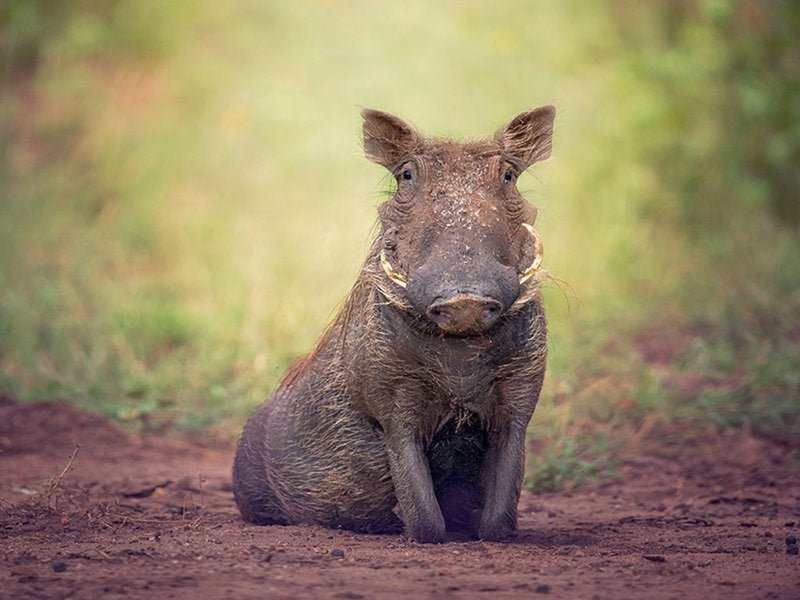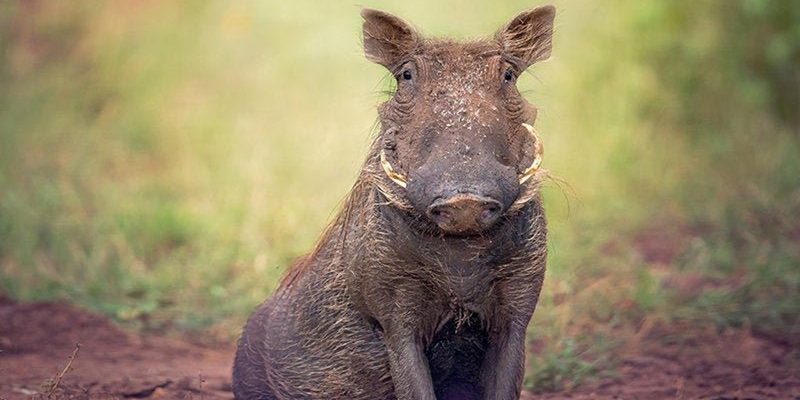
Warthogs are native to Africa and adapt well to various environments, from savannas to woodlands. They are often seen grazing peacefully on grass and roots, yet they can be unpredictable when they feel threatened. Let’s dive deeper into the question: can the warthog really pose a danger to humans?
Understanding Warthogs: A Quick Overview
Warthogs (Phacochoerus africanus) are fascinating creatures that belong to the pig family. They are named for their distinctive wart-like growths on their faces, which are actually thick skin protecting their tusks. These wild animals can weigh between 90 to 250 pounds, and they can reach lengths of up to 4.5 feet. The males are generally larger than the females, and their tusks can grow quite long, making them formidable defenders when threatened.
Warthogs are primarily herbivores, feeding on grasses, roots, and berries. They often use their powerful snouts to dig into the ground in search of food. While they have a reputation for being comical with their awkward gait and curious nature, it’s important to remember that they are wild animals and can be unpredictable, especially if they feel cornered.
Are Warthogs Naturally Aggressive?
You might be wondering if warthogs are inherently aggressive. While they aren’t known for being violent creatures, they definitely exhibit aggression when defending themselves or their young. During the breeding season, males tend to be more territorial and can engage in fierce battles with rivals.
Here’s the thing—you shouldn’t assume that a warthog will shy away from you. If they feel threatened, especially if they have piglets with them, they can become surprisingly hostile. A wounded warthog can also be particularly dangerous, as it might lash out in self-defense. If you find yourself face-to-face with one, it’s best to keep your distance and observe their behavior from afar.
What Triggers Aggressive Behavior in Warthogs?
Understanding what triggers a warthog’s aggressive behavior is key to staying safe. Several factors can make these animals feel threatened:
- Encroachment: Warthogs are wild animals and can perceive humans as threats to their territory.
- Protection of young: If a mother warthog feels her piglets are in danger, she can become very aggressive.
- Surprise encounters: Sudden movements or loud noises can startle them, leading to a defensive reaction.
When you’re out in the wild and spot a warthog, try to observe it quietly from a distance. The more you can avoid startling them, the better your chances are of staying safe.
Real-Life Encounters: When Things Go Wrong
Though warthogs are generally non-aggressive, there have been instances where humans have found themselves on the wrong end of a tusk. There are stories of misguided tourists or researchers getting too close to a warthog, only to find themselves charged at. One such incident involved a wildlife photographer who, while trying to capture the perfect shot, ended up between a mother warthog and her piglets. The startled mother charged, and although the photographer escaped with minor injuries, it was a close call.
Such real-life examples highlight the unpredictability of interacting with wild animals. It’s crucial to understand that their natural instincts can kick in at any moment, and what seems like a peaceful encounter can turn dangerous.
How to Stay Safe Around Warthogs
If you ever find yourself in an area populated by warthogs, there are some important safety tips to keep in mind. Here’s how you can reduce the risk of a dangerous encounter:
- Maintain distance: Always keep a safe distance between you and any wild animal, especially a warthog.
- Avoid sudden movements: If you see a warthog, move slowly and calmly. Avoid startling them with quick movements.
- Stay aware: Be conscious of your surroundings, especially if you notice a warthog with young piglets nearby.
- Refrain from feeding: Never feed warthogs or any wild animal. This can encourage them to come closer and become reliant on human interaction.
By following these simple steps, you can help ensure a safe experience while still enjoying the wild beauty of these fascinating creatures.
Warthogs in Their Ecosystem
Warthogs play an important role in their ecosystem. Like many herbivores, they help maintain the balance of their environment by controlling plant growth. Their rooting behavior allows for better soil aeration and can facilitate the growth of new plants in their habitat.
Interestingly, their interaction with other animals also contributes to a thriving ecosystem. They often share their territory with various birds that clean parasites off their skin. This symbiotic relationship benefits both the warthogs and the birds, making them important players in their habitats.
So, while it’s essential to respect warthogs and understand the precautions necessary around them, it’s also crucial to recognize their role in the ecosystem. They are more than just an animal to fear; they are a vital part of the wildlife community.
In summary, warthogs can be dangerous to humans under certain circumstances, especially when they feel threatened or protective. By understanding their behavior and respecting their space, we can avoid dangerous encounters. It’s always a good practice to observe wildlife from a distance and appreciate their unique qualities without putting yourself at risk.
So, the next time you think about the warthog, remember that while they have their charming quirks, it’s best to admire them from afar. With a little understanding and respect for these fascinating creatures, you can enjoy the beauty of the wild without unnecessary risks.

